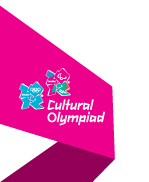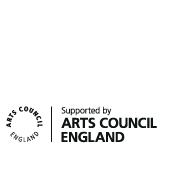Below is a short interview with Michelle Deignan, the artist behind this month’s ‘Revolution’ series. Revolution is an episodic text piece written in the style of a film script. Each day the new episodes animate, as if type written live, across ten selected bus-tops across the city. These episodes are somewhat self-contained whilst being linked across each installment, describing often prosaic and occasionally dramatic fictional events.
BT: The work you are producing for Bus-Tops is named Revolution, how did you come to this title?
MD: The word revolution is great because it has so many meanings and it used in so many disparate contexts. There are a lot of new products and systems that are marketed using the word revolution. For me, it’s a timely word that’s often misused.
BT: When people first see a Bus-Top they sometimes think it’s an advertising platform - has that and other thoughts about how the work will be received by the public influenced the work?
MD: The fact that people come to a new public visual presentation, presuming it’s trying to sell you something, says a lot about how public visual space in the city has been colonised by economics. ‘Revolution’, doesn’t try to overthrow this condition but quietly side step it, the opposite perhaps of what you would expect from a revolution.
BT: As a platform that lends itself to imagery, by using text as youmr media what experiences in the viewer are you intending to elicit?
MD: Most of the bus travellers who see the screens will come across the texts without any context, any back story or any continuity from one part to another. I’m interested in each script part working as a punctuation point for the passengers on their journey. Text is evocative and can prompt images, be they prosaic or dramatic. That’s ideal.
BT: We are now past 100 parts to Revolution, but did you create every part at once? Can you talk a bit about your creation process?
MD:I’ve been writing and animating the piece right throughout this month and have loved developing the text in this way. The writing is closely linked to doing the animations. I write the parts then edit and rearrange the order of the text in relation to how it works visually amongst other things. Earlier in the month I wrote sections, changed my mind, then re-wrote. As time has gone on and the scenario has become more established it feels like it’s kind of writing itself now. I didn’t have the whole scenario plotted before I started. All I knew was there would be at least one character in it doing a review of the bus-tops. The last part of the piece isn’t written yet but I do know now how it’s going to end!
BT: Some of the themes in the Revolution work talk directly to the everyday, and it seems the every day in the life of people involved in media, can you tell us a bit about why these were the characters you chose to focus on for the work?
MD: The structures through which cultural activities are mediated and disseminated is a reoccurring interest for me. The media industry in London is massive and cultural activity is often it’s bedfellow. That said there are many art critic’s that I know that would shudder at the thought that they were being categorised as ‘media’ people!
You can see all of Deignan’s work ‘Revolution’ for Bus-Tops here and a more comprehensive body of her work here.





May 29th, 2012
0